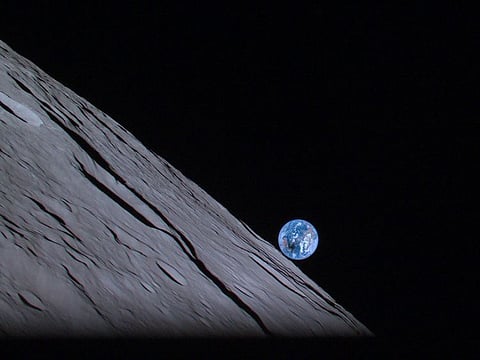UAE: Challenges for Rashid Rover’s Moon landing explained
Derailment from trajectory, communication loss, lunar craters and boulders among the risks

Dubai: As the UAE attempts a history feat to become the first Arab country to land on the Moon tonight, the Mohammed Bin Rashid Centre (MBRSC), the agency behind the Emirates Lunar Mission (ELM) has explained the challenges that lie ahead for the Emirati-built Rashid Rover during the landing attempt.
The challenges include the lander derailing from its trajectory, communication loss, harsh landing due to environmental changes or lander faults and surface threats like craters and boulders.
The success rate of lunar missions is only 50 per cent. Only the US, the former Soviet Union, and China have successfully made soft lunar landing attempts. Both India and Israel had made hard landings on the moon, causing the landers to crash.
Landing site
According to ispace, the Japanese lunar exploration company that built the lander, the primary landing site is the Atlas Crater, located in the northeastern quadrant of the Moon. The site Mare Frigoris is also known as the Sea of Cold that lies in the far lunar north.
“The site meets the technical specifications of the lander technology demonstration mission, the scientific exploration objectives for the @MBRSpaceCentre mission, as well as the mission requirements of our other customers,” ispace said in a tweet today.
“Landing site selection was accomplished through collaboration with MBRSC and @CrpgNancy,” it added, referring to Centre de Recherches Pétrographiques et Géochimiques (CRPG), a French research laboratory for Earth and Planetary Sciences.
MBRSC had earlier said that the landing site was chosen along with multiple contingencies, which may be used depending on variables that occur during transit.
Stunning images
Meanwhile the Japanese lander sent back stunning images of the Moon yesterday.
“We are excited to share a new photo of the Moon taken by the lander’s on-board camera from an altitude of about 100km above the lunar surface,” ispace said in a tweet on Monday evening.
“We’ve received another incredible photo from the camera onboard our Mission 1 lander! Seen here is the lunar Earthrise during solar eclipse, captured by the lander-mounted camera at an altitude of about 100km from the lunar surface,” ispace said in its second tweet later the same day.
Sign up for the Daily Briefing
Get the latest news and updates straight to your inbox



